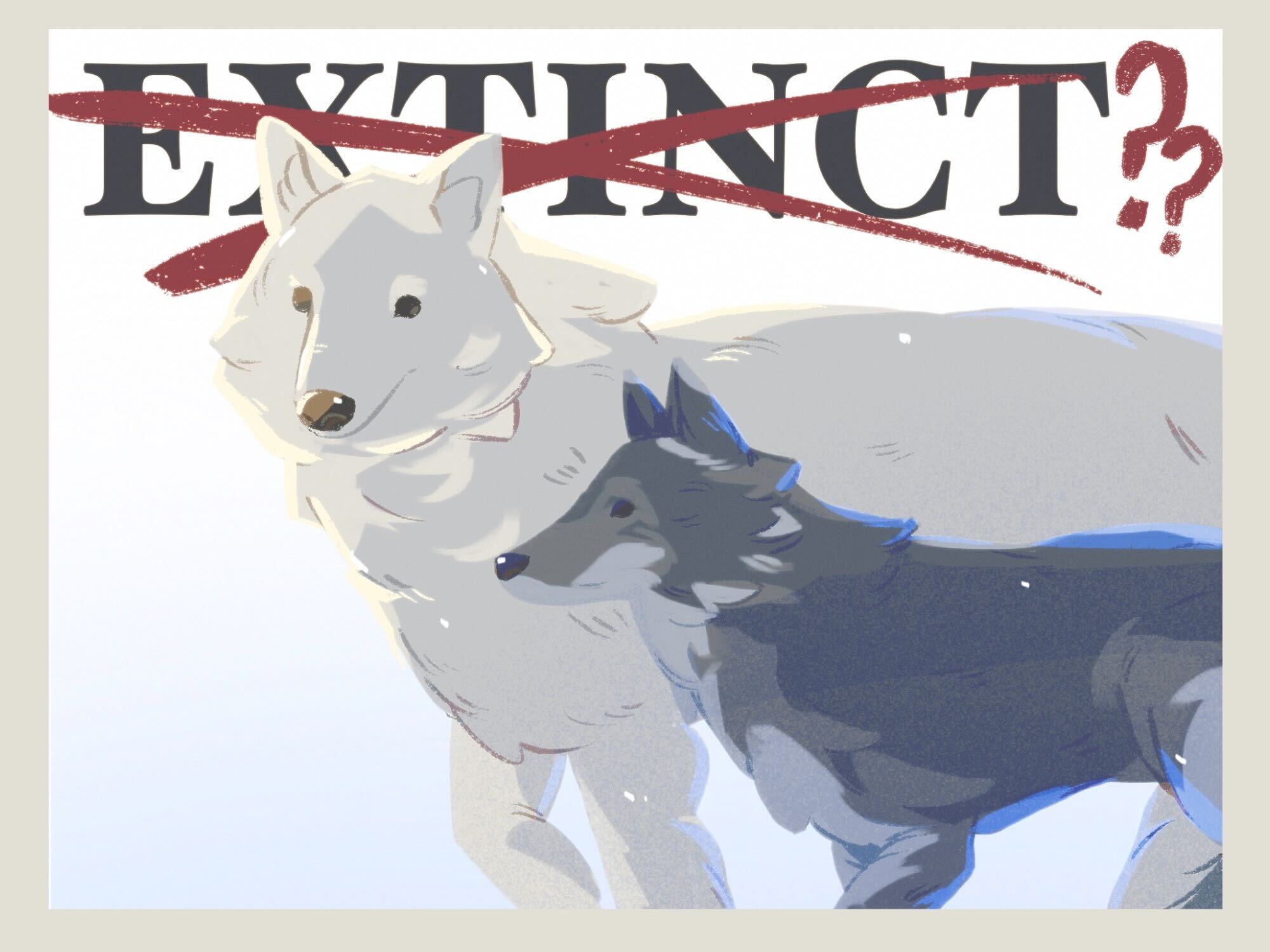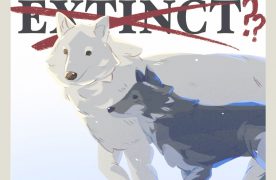Reviving extinct species is humanity’s perpetual white whale: It dominates our collective imagination, helped by movies like Jurassic Park and other sci-fi media.
Colossal Laboratories and Biosciences is one of the research labs trying to bring back extinct animals. Specifically, it focuses on the woolly mammoth — which it calls “a vital defender of the Earth.”

But, resurrecting the mammoth is a big task that brings to mind even bigger questions: How will the mammoth pups gestate? Where will such big creatures be raised? So, Colossal decided to focus on a more manageable task in the meantime — dire wolves — before moving on to its magnum opus.
Dire wolves share ancestry with modern-day dogs, which scientists have already studied and gathered data on extensively. Therefore, dire wolves act as an easier jumping-off point for reviving extinct species than mammoths.
To start its experiment, Colossal isolated DNA from dire wolf fossils and found that extinct dire wolves are about 99% similar to grey wolves — a non-extinct species. This means that scientists only need to slightly tweak a grey wolf genome to create a dire wolf.
The researchers started by growing gray wolf cells in a lab, before editing 20 different genes to make a dire wolf modification. Then they implanted the genetically modified eggs into surrogate dogs.
Of the dozens of modified eggs produced, only four pups were born, and only three continue to survive: Romulus, Remus and Khaleesi.
As the pups have matured, Colossal notes that they are bigger than gray wolves and have distinct mane and tail fur patterns. But it’s difficult to ascertain the behavioral differences from gray wolves given how monitored and pampered the dire wolves are.
Bringing back an extinct species is flashy. It makes a great headline. But, it also misses the point of ongoing conservation issues.
Gray wolves, the species Colossal pulled DNA from to help with their experiments, have long been over hunted to the point of being endangered. Other wolf species, like red wolves, are so critically endangered that only 16 remain in the wild.
Bringing back extinct species has the potential to detracts focus from existing endangered species. It makes it seem easy to bring back a species from the dead, when in reality it took years and an inordinate amount of money — Colossal is valued at $10 billion.
Plus, scientists have questions about whether these animals can actually be called dire wolves, noting differences in diet and behavior.
Furthermore, even though 20 genes were edited to make the gray wolves into dire wolves, that number of genes differentiating the species could be much higher.
The genome might not fully be reconstructed, the diets might not be the same — but if it looks like a dire wolf and talks like a dire wolf, is it a dire wolf? The scientists at Colossal don’t quite seem to care about that distinction.
The laboratory’s chief scientist, Dr. Beth Shapiro, told the Independent: “We’re going to call them de-extinct dire wolves. You can call them proxy dire wolves or Colossal dire wolves. Or, you can call them gray wolves with 20 edits that recreate functional dire wolves in the ecosystems of today.”
Perhaps Shapiro is right. The distinction doesn’t matter as long as these wolves do exist. But bringing back extinct species comes with a whole flurry of global consequences and questions, such as the ethics of bringing a species into a world of climate change and habitat loss.
Additionally, existing food chains will have to shift to accommodate additional predators and prey — potentially driving other species to extinction.
There’s also the matter of the pups themselves — there are only three of them. Their ancestors were pack animals who lived in a world with very different species and environmental makeup. These pups are a scientific marvel, but they will never get to experience the life of a wild animal.
Colossal’s technologies do have fascinating implications for saving endangered species though — if used correctly. The ability to clone and raise genetically modified animals in a lab could help grow the populations of species like the red wolves — which lack genetic diversity due to their extremely low numbers.
Genetic diversity plays an important role in keeping a species safe from disease and allowing for adaptation to crises. But developing a species from scratch is an expensive, short-term fix for a problem that stems from overhunting and lack of protection for at-risk animals.
Colossal’s innovations beg the question: What role do genetically modified organisms have in conservation?
It is no easy feat to bring back the dire wolves from the grave, and the scientific innovations from this experiment will change the game when it comes to improving science around genetically engineering species.
Shapiro argues nature can’t keep up with the challenges of just how fast the world is changing.
We might need some degree of scientific intervention to help protect and preserve the species that are struggling. But at the same time, many of these problems are caused by human carelessness that can be mitigated by better federal regulations around hunting and higher priority of ecosystem preservation.
Colossal’s research is interesting. But we have to remember to look past the cool headlines at the bigger issues behind conservation and extinction.














